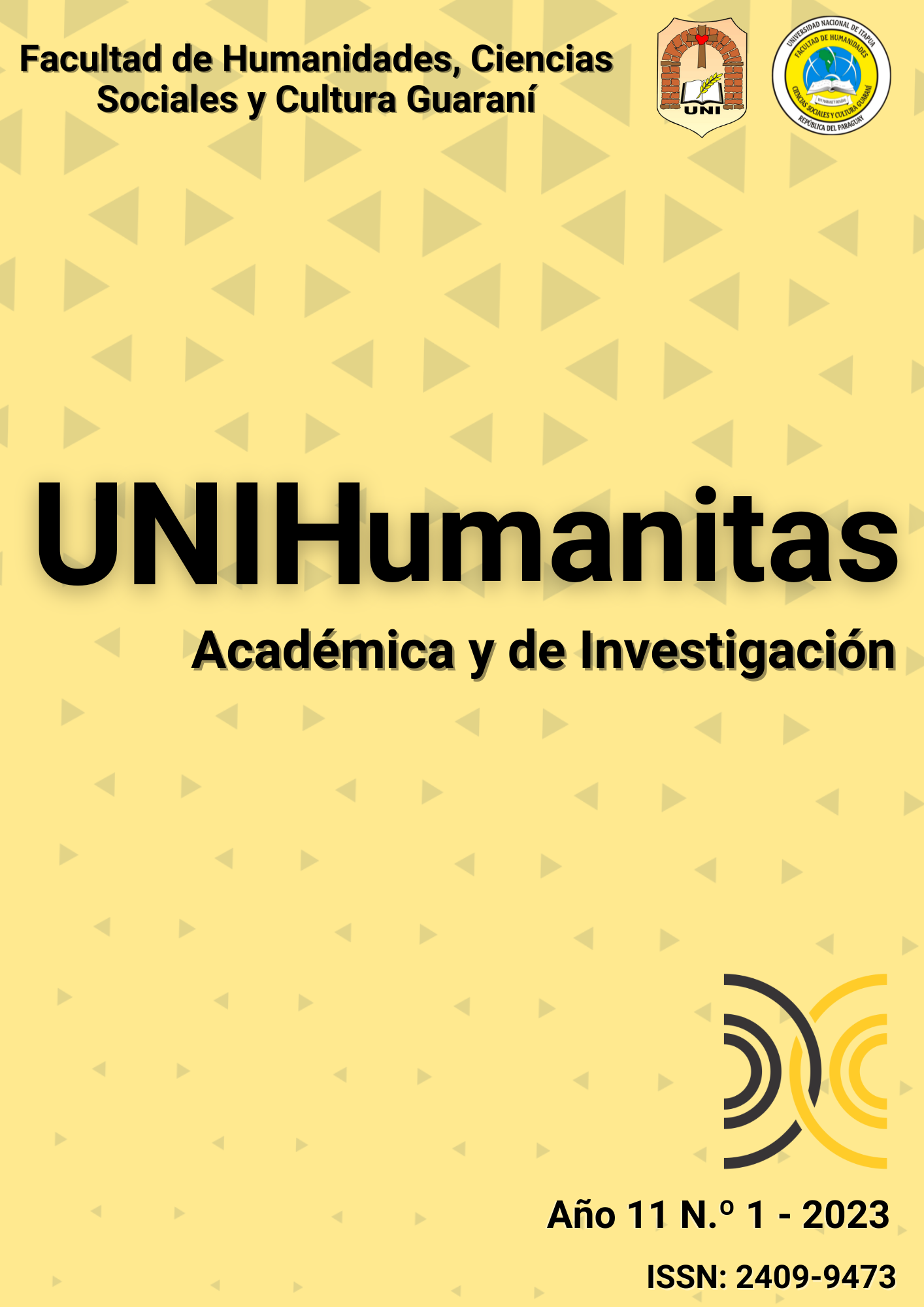Analysis of the work "Cuentos sin Mordaza" by Lucía Scosceria de Cañellas from the perspective of Russian Formalism and Structuralist Theory
Main Article Content
Abstract
This research analyzes the work "Cuentos Sin Mordaza" by Lucía Scosceria de Cañellas from the Russian Formalism and the Structuralist Theory. It is necessary due to the intention of a greater appreciation of Paraguayan literature. The construction and application of literary analysis as a contribution to regional literature, research in this area and an analysis guide for future students of language or literature majors. The objective of the research was to analyze the characteristics of the work "Tales without a Gag" by Lucía Scosceria de Cañellas from the Russian Formalism and Structuralism. For this, the qualitative methodology of literary analysis was used. The methods and strategies were considered and linked explicitly and implicitly with literary theories, specifically with the Russian Formalism of Propp and others, as well as Structuralism, of Barthes and others. The research established the relationship between the literary theories used with the different stories analyzed through their respective functions, which were evidenced and verified as present within the structure of most stories.
Article Details

This work is licensed under a Creative Commons Attribution 4.0 International License.
References
Aguilera, N. (2006). Literatura interactiva 1. Asunción: Edición al cuidado del autor.
Aguilera, N. (2007). Comprensión lectora y algo más: Material didáctico para docentes (2ª ed.). Asunción: Servilibro.
Barthes, R. (1977). Introducción al análisis estructural de los relatos.
Hernández Sampieri, R. (2010). Metodología de la investigación. México: McGraw-Hill.
Hibbett, A., & Gracia Ríos, M. (2019). Guía de investigación en literatura. Universidad Católica de Perú, Lima. Recuperado de https://investigacion.pucp.edu.pe/wp-content/uploads/2019/07/guia-de-investigacion-en-literatura.pdf
Méndez-Faith, T. (2008). Historia de la literatura paraguaya. Asunción: El Lector.
Ministerio de Educación y Ciencias (MEC). (2014). Programas de estudio 3er ciclo. Asunción: MEC. Recuperado de https://www.mec.edu.py/index.php/es/todas-las-categorias/category/12-tercer-ciclo
Propp, V. I. (1981). Morfología del cuento: seguida de las transformaciones de los cuentos maravillosos (Vol. 21). Editorial Fundamentos.
Scosceria de Cañellas, L. (2003). Cuentos sin mordaza. Encarnación: Centro Gráfico.
Tavarone, D. (1992). Fundamentos de lingüística para docentes y estudiantes de magisterio. Buenos Aires: Guadalupe.
Valdés, R. (1987). El análisis morfológico del cuento. Aisthesis: Revista Chilena de Investigaciones Estéticas, 20, 19-22.
Vergara Alfonzo, N. (2010). Teorías literarias del siglo XX, que utilizan los docentes de la educación media, turno tarde, del Colegio Yacyretá de la ciudad de Encarnación para el análisis de textos literarios (Tesis de grado, Universidad Nacional de Itapúa, Encarnación). Recuperado el 17 de junio de 2021.

